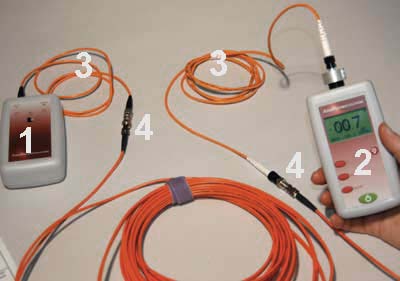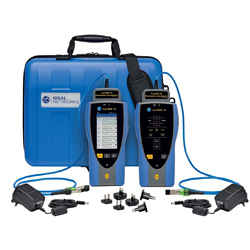Elevate your QA operations with an optical measurement system
Wiki Article
A Comprehensive Guide to Optical Measurement System for Fiber Analysis
When it pertains to fiber analysis, comprehending optical measurement systems is important for reviewing efficiency and ensuring top quality. You'll check out crucial techniques like interferometry and spectroscopy, which help you measure crucial criteria. Yet there's more to it than just these techniques; understanding attenuation measurement techniques can considerably influence your network's performance. As you navigate via this guide, you'll reveal understandings that can transform your method to optical fiber.Understanding Optical Measurement Equipments
When you check out optical dimension systems, you'll find they're necessary for analyzing fibers with precision. These systems make use of light to assess numerous features of fibers, including diameter, refractive index, and uniformity. By using techniques like interferometry and spectroscopy, you can get important understandings into the fiber's properties.You'll discover that these systems are designed to reduce errors and improve accuracy, ensuring reliable information for your evaluation. Various configurations, such as single-mode and multi-mode systems, accommodate certain fiber kinds, enabling you to select the very best suitable for your needs.Moreover, the integration of sophisticated software tools assists you interpret the data effectively, making it simpler to determine any kind of variances or problems. As you explore much deeper right into these measurement systems, you'll value how they streamline the logical procedure and enhance the total quality of fiber manufacturing and testing.Secret Specifications for Fiber Analysis
Secret specifications for fiber evaluation play a necessary role in identifying the high quality and efficiency of fiber optics. When you review a fiber, you'll want to concentrate on qualities such as attenuation, bandwidth, and modal dispersion. Depletion measures the loss of signal stamina as light travels with the fiber. A lower depletion worth shows far better top quality and longer transmission distances - fibre testing equipment.Bandwidth describes the data-carrying capability of the fiber and is essential for high-speed interaction. You'll need to analyze the bandwidth to assure it fulfills your application demands. Modal diffusion, which arises from the various speeds at which light travels through numerous settings in multimode fibers, impacts signal clearnessStrategies for Attenuation Measurement

Data transfer and Its Influence On Performance
Understanding bandwidth is vital for enhancing fiber efficiency, as it directly affects the amount of information that can be transmitted over a network. Greater data transfer implies you can send more info simultaneously, enabling for faster interaction and much better total performance. When you're functioning with fiber optics, it's crucial to consider how data transfer engages with fiber attributes, such as core size and product properties.If the bandwidth is restricted, you may experience information loss or slower rates, impacting your applications. In addition, various kinds of fibers can sustain varying data transfer degrees, so it is very important to pick the appropriate fiber for your certain needs.You should likewise bear in mind that environmental aspects, like temperature and exterior disturbance, can influence transmission capacity. By understanding these elements, you can make educated choices to boost your fiber optic systems, guaranteeing reliable and reliable data transmission.Refractive Index Measurement Techniques

Overall Inner Representation
Overall internal reflection (TIR) works as a basic principle for determining the refractive index of fibers. When light travels from a denser medium to a much less thick one, it can only be totally mirrored if the angle of incidence surpasses a specific threshold, known as the crucial angle. This phenomenon permits you to figure out the refractive index by evaluating the angles at which light shows or refracts. By utilizing a setup that routes light right into a fiber and determines the resulting angles, you can calculate the refractive index accurately. Understanding TIR not only enhances your fiber evaluation but also boosts the design and efficiency of optical systems. So, leveraging TIR can lead to extra reliable fiber-based applications.Interferometric Techniques
Structure on the concepts of total inner representation, interferometric techniques supply an effective means for determining the refractive index of fibers with high accuracy. These methods manipulate the interference patterns created when beams split and recombine after taking a trip various courses. You can make use of configurations like the Michelson or Mach-Zehnder interferometer to examine phase changes brought on by changes in refractive index. By meticulously calibrating your system and assessing the resulting fringes, you can identify the refractive index with impressive precision. It's essential to preserve secure environmental conditions to minimize mistakes. With these strategies, you'll enhance your understanding of fiber homes, leading to far better efficiency in numerous applications, from telecoms to sensor innovation.Modal Diffusion and Its Significance
Modal diffusion describes the spreading of light pulses as they travel with a fiber, which can influence the overall efficiency of the system. You'll see that this sensation can bring about indicate distortion, influencing data transmission prices and high quality. Understanding its relevance is crucial for optimizing fiber optic designs.Interpretation of Modal Diffusion
In optical fiber interactions, modal dispersion plays a significant role in identifying signal top quality and transmission rate. It takes place when different light modes travel at differing speeds with the fiber. Considering that each setting has distinctive paths and qualities, they can reach the getting end at various times. This moment distinction can result in signify dispersing and distortion, which can deteriorate the general performance of the interaction system. You may experience modal diffusion largely in multimode fibers, where the multiple courses of light worsen the issue. Comprehending modal diffusion is necessary for maximizing fiber designs and making sure that your communication systems operate successfully, keeping the integrity of the transmitted signals over longer distances.Results on Fiber Efficiency
Recognizing modal diffusion assists highlight its effects optical fibre diameter analyzer on fiber performance. This phenomenon happens when different modes of light travel at varying speeds within the fiber, causing indicate spreading in time. As you evaluate fiber optics, you'll observe that boosted modal dispersion can considerably deteriorate signal top quality, leading to reduced data transfer and longer transmission ranges. In sensible terms, this indicates your data can show up altered or postponed, influencing general interaction efficiency. To reduce these impacts, you may consider utilizing single-mode fibers, which decrease modal diffusion. By selecting the right fiber type and understanding just how modal diffusion influences performance, you can enhance transmission top quality and warranty trustworthy data transfer in your optical dimension systems.Devices and Technologies for Optical Measurements
When it pertains to optical dimensions, a number of innovative tools and technologies are at your disposal to improve fiber analysis. You'll locate fiber optic testers, which evaluate signal high quality and performance, essential for keeping suitable network effectiveness. Optical time-domain reflectometers (OTDRs) are crucial for locating faults and gauging loss over distances, giving thorough insights into fiber honesty. Additionally, spectrometers can assess light spectra, assisting you recognize material properties and composition.Don' t neglect the value of imaging systems, like electronic microscopes, that allow you to aesthetically check fiber surface areas for flaws. Take into consideration utilizing polarization analyzers to gauge anxiety and stress in fibers, which is crucial for understanding their behavior under numerous conditions. By leveraging these tools and modern technologies, you can greatly boost your fiber analysis procedures, making sure dependability and high efficiency in your optical networks.Often Asked Concerns
What Are the Costs Connected With Optical Measurement Solutions?
The prices linked with optical dimension systems can vary considerably. You'll require to examine devices costs, upkeep charges, software application licenses, and potential training expenditures. Budgeting thoroughly will help you avoid unanticipated economic obstacles down the line.
Exactly How Usually Should Fiber Analysis Be Carried Out?
You should perform fiber analysis frequently, typically every six months or after substantial changes in the environment (optical measurement system). This ensures optimal performance and assists identify possible problems before they affect your system's effectiveness and reliabilityCan Optical Measurement Equipments Be Calibrated in the house?
Yes, you can adjust optical dimension systems in the house, however it calls for accuracy. Make specific you comply with the supplier's guidelines, utilize proper calibration criteria, and double-check your results to guarantee accuracy in your dimensions.
What Industries Generally Make Use Of Optical Measurement Systems?
You'll find optical measurement systems commonly used in sectors such as telecommunications, manufacturing, medical care, and study. They're necessary for quality assurance, fiber analysis, and making sure accurate dimensions in various applications, enhancing efficiency and accuracy across sectors.Are There Any Security Interest In Optical Measurement Equipments?
Yes, there are security issues with optical measurement systems. You must always use safety glasses to shield your eyes from intense lights and guarantee proper training to deal with tools safely and prevent crashes.Report this wiki page